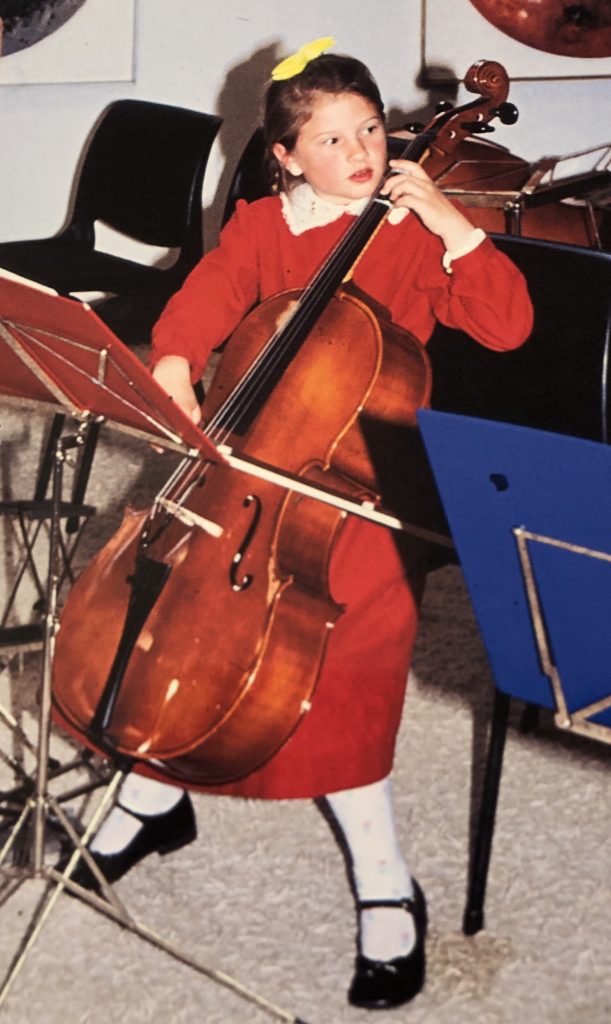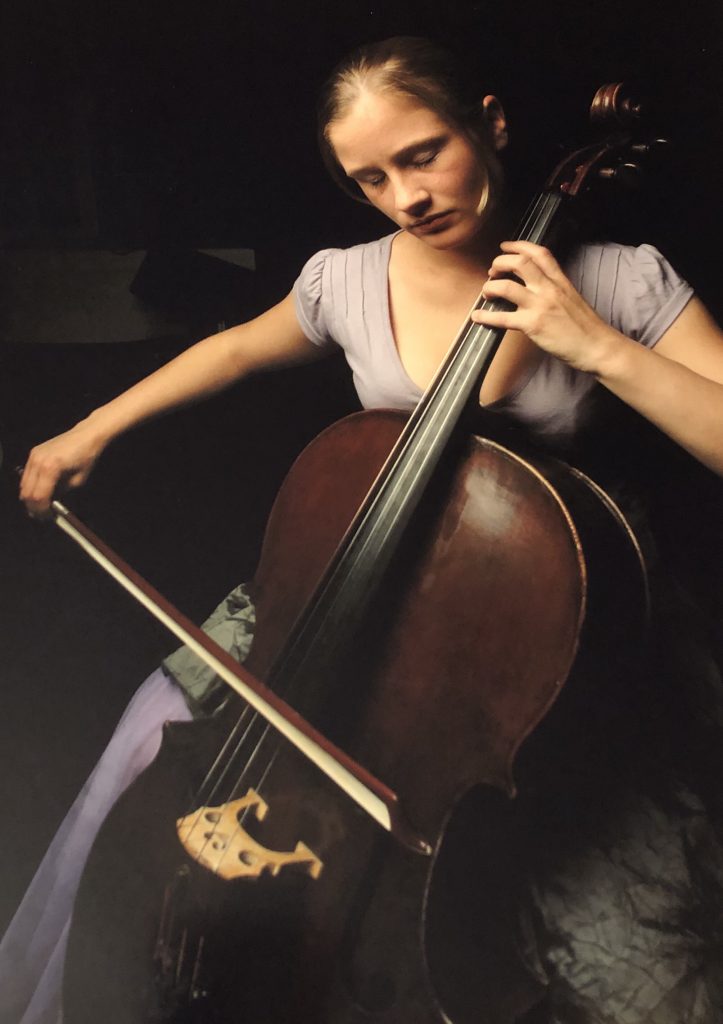I vividly remember my first meeting with the cello. I was 6 years old, and after having tried a few instruments, my parents took me to see my first cello teacher. She was loving and kind, and the sound of the cello made me feel happy and free. The first time I brought my cello home, and got to play it, I took my time and randomly played on all the strings as loud as possible. It felt good and I was on my way to become the cellist that I am today.

Throughout the years I’ve had many different teachers and not one of them taught in the same way. Of course, the methods were the same for some of them. But their personalities and approaches were different and made every single one unique.
I have studied the Suzuki method in Scandinavia throughout several years – although I am not certified. I have studied the Colorstrings method in London and Helsinki, and I have taught using the Colorstrings method for many years. I have also been part of translating/tailoring Colorstrings teaching material to Danish students and to implement its use in Denmark. I have studied classic teaching methods at the Academy of Music, and I’ve even studied and made an analysis of some of the greatest cello teachers and their methods (Analysis of teaching methods during master classes at “the Manchester Cello festival” in 2007). I have also participated in Music Mind Games workshops in Denmark, where I have learned how to teach music theory in a creative and fun way.
I have taught for more than 20 years and I have had the pleasure of teaching the cello to all age groups from 4 to 60 years. I have taught both solo lessons, group lessons, cello ensemble, chamber music and string orchestra. I have also taught “music and movement” classes for toddlers and young kids.

With all this experience I have developed my own approach to teaching. I continuously develop new teaching materials, I create arrangements and write music for small ensembles – especially cello ensemble – and I write the music for my own cello lesson books. I believe that all students are unique and I know that everyone learns differently. The correct technique and the ability to build up strength slowly, gives the student the very best foundation for becoming a great cellist. I believe that knowing the theory behind the music is important and that being able to read the notes is a crucial part of learning how to play. I emphasize on teaching how to practice at home, and I know that “learning by doing” works. I always teach my students to know the “why” – both technically and musically. That is something that can make them better – faster. Because knowing why we do what we do gives us an extra dimension to learning and understanding. For the younger students I implement various games to make learning fun, and I try to always get to know the students on a personal level. That way I can give them the very best lessons.
Love, live, play!
Julie
